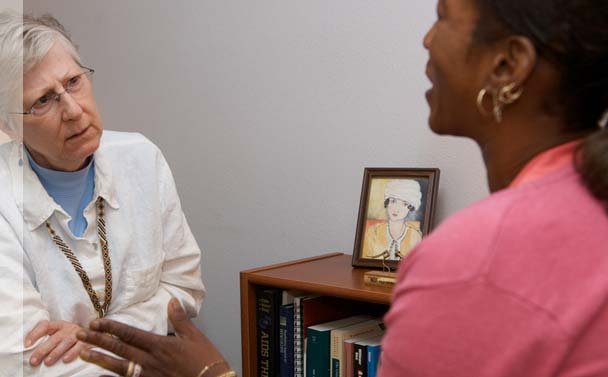Pinpointing what it means to be deliver culturally competent care, particularly within the field of HIV/AIDS, is challenging. Ask fifteen different providers to describe what they think culturally competent HIV care is, and you will likely receive fifteen different answers. What they will all agree on, however, is what culturally competency is not.1
Consider, for example, the case of Gilda,2 a Caucasian nurse practitioner in Denver, Colorado who was concerned about several of her patients; married women of child-bearing age who had arrived in the U.S. about five years earlier from West Africa. Gilda says the women were reticent about discussing birth control or sex. What Gilda could garner raised red flags about potential intimate partner violence (domestic violence) and spousal infidelity. She suggested to each of them that they use condoms until they could come in with their husbands to get tested for HIV and sexually-transmitted diseases (STDs). The visit ended with Gilda giving each woman a strip of prophylactics to take home, and instructions to make an appointment.
Gilda never saw the patients again. The reason is likely stemming from her lack of adequate skills addressing sensitive issues around reproductive health and HIV with women from different parts of the world. Indeed, her approach was not culturally competent. The term is officially defined as the “congruent behaviors, attitudes, and policies that come together to enable systems, agencies and professionals to work effectively in cross-cultural situations”3 that empower care providers to deliver services in a manner that is respectful of a patient’s culture or individual identity.4 These identities are not fixed; but composed of an ever-changing amalgam of overlapping systems of communications, thoughts, actions, customs, beliefs, and values informed by an individual’s racial, ethnic, religious, or social groups that can shift over time as a person ages, adopts different means of individual expression, changes professions, and so on.5 In the case of Gilda’s patients, they had just undergone a major life change, moving to a new country with a vastly different climate, language, and a seemingly threatening approach to health care.
Navigating this nexus of identities or “cultural constellation” is an ongoing, iterative pursuit. As Lucy Bradley-Springer, primary investigator of the Mountain Plains AIDS Education and Training Center explains,
Knowing general cultural norms can help inform how you initially approach a patient … The idea is to address a person’s culture from their individual experience, not as a stereotype. You may become competent in one or a dozen areas over time; but you’ll never become completely culturally competent. It is an ideal you’re always striving for.
Lawrence Friedman, director of the University of Miami, Miller School of Medicine, Department of Pediatrics’ Division of Adolescent Medicine, which houses the school’s Part D Special Adolescent Clinic (SAC) for HIV-infected youth, says that cultural competency involves “accepting a patient as a person no matter what … regardless of their race, ethnicity, or sexual identity.”
The need for this acceptance and cultural capacity in HIV cannot be overstated. Walk through the door of any Ryan White provider clinic, and you will find a cross-section of the communities hardest hit by HIV/AIDS since the epidemic began: people of color, substance users, and sexual minorities. These are people living at or below the Federal poverty line, who are un- or -underemployed, have unstable housing, little or no insurance, and limited educational attainment. Entering HIV care often marks the first time they have ever had a primary care physician.6,7,8





